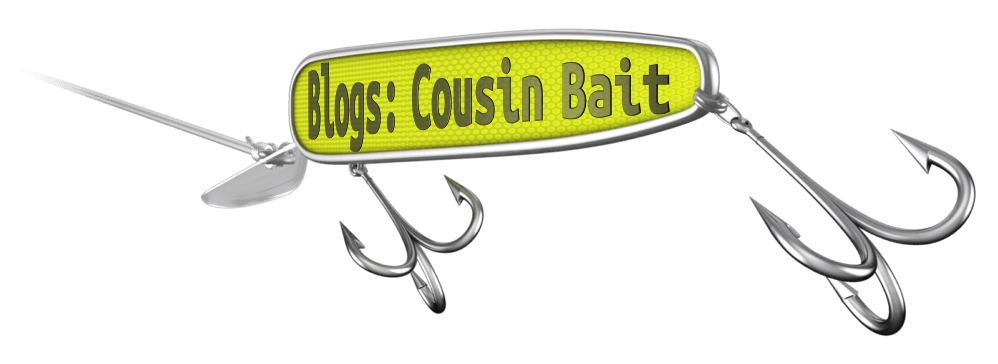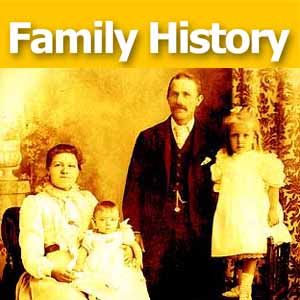by Lisa Cooke | Dec 4, 2013 | 01 What's New, Digital Archives
Over million in grants has been awarded by the National Archives (U.S.) to digitize important historical documents. Here’s how the  awards break down:
awards break down:
- $1.1 million to “nine publishing projects from the U.S. Colonial and Early National Period, including the papers of Benjamin Franklin, George Washington, John Adams, Thomas Jefferson, James Madison, Dolley Madison, and John Jay. Projects to record the Documentary History of the Ratification of the U.S. Constitution and the Documentary History of the First Federal Congress also received funding”
- Nearly $700,000 to “State and National Archives Partnership (SNAP) grants to enable 28 state historical records advisory boards to carry out their mission to support archival education and strengthen the nation’s archival network;”
- Over $500,000 to 7 projects to “digitize World War II Oral History files; the papers of Leo Szilard, the nuclear physicist; the papers of General Oliver Otis Howard, Civil War general, Commissioner of the Freedman’s Bureau, and third president of Howard University; Historical Collective Bargaining Agreements from the 1880s through the 1980s; the Center for Jewish History’s American Soviet Jewry Movement collections; Early Connecticut manuscripts; and 19th century trademark files in the California Archives, including the original trademarks and specimens from Levi Strauss & Co. jeans, 19th century medicines and tonics, and the original trademark registered to Anheuser Busch for its Budweiser lager.”
As you can see, there’s a lot in there to appeal to family historians. Maybe not so much the Levi Strauss and Budweiser artifacts, but I could see many of us being interested in the World War II oral history files; the papers of the Freedman’s Bureau Commissioner; the Center for Jewish History’s files; those early Connecticut manuscripts and more.
The National Archives’ press release doesn’t say where these digitized files will end up. But I’m guessing at least some will eventually be made available on Founders Online, an award-winning database on the papers of “America’s Founders.”
by Lisa Cooke | Dec 4, 2013 | 01 What's New, Digital Archives
 I’ve blogged before about the relatively new Digital Public Library of America (here’s a post introducing the DPLA and here’s one on historical maps you’ll find there). Now the Library of Congress has posted a 31-minute webcast that features the DPLA content director, Emily Gore. She not only demonstrates some great examples of what you can find in the public portal of the DPLA, but also discusses the potential for gathering even more materials (she gives an example using local sources.) It’s a great introduction to the site, and Gore answers some questions from the audience that seem to be on a lot of people’s minds.
I’ve blogged before about the relatively new Digital Public Library of America (here’s a post introducing the DPLA and here’s one on historical maps you’ll find there). Now the Library of Congress has posted a 31-minute webcast that features the DPLA content director, Emily Gore. She not only demonstrates some great examples of what you can find in the public portal of the DPLA, but also discusses the potential for gathering even more materials (she gives an example using local sources.) It’s a great introduction to the site, and Gore answers some questions from the audience that seem to be on a lot of people’s minds.
Looking for a more basic intro to the DPLA? Check out this introductory video, too.
by Lisa Cooke | Dec 4, 2013 | 01 What's New, DNA, images
There’s been a lot of buzz lately over 23andMe’s genetic testing products and services. The company has ongoing issues with the Food and Drug Administration (FDA), which requires paperwork and data they say 23andMe hasn’t provided. A class-action lawsuit is in the works. But the second issue is creating most of the buzz outside of genealogy circles: the idea that 23andMe’s genetic tests could be used to create “designer babies.”
First: FDA
 So why does the FDA, a U.S. regulatory agency, care about genetic genealogy kits? Because they’re marketed as more than that. 23andMe describes their kits as tools for helping users make more informed decisions about their personal health. (See the letter sent by the FDA for more details.)
So why does the FDA, a U.S. regulatory agency, care about genetic genealogy kits? Because they’re marketed as more than that. 23andMe describes their kits as tools for helping users make more informed decisions about their personal health. (See the letter sent by the FDA for more details.)
Bottom line? “FDA is concerned about the public health consequences of inaccurate results from the PGS [Personal Genome Service] device; the main purpose of compliance with FDA’s regulatory requirements is to ensure that the tests work….Therefore, 23andMe must immediately discontinue marketing the PGS until such time as it receives FDA marketing authorization for the device.” (emphasis added)
A news reporter describes his experience with 23andMe as very much about health information, not just ancestry: “I apparently have a higher risk of thromboembolism, Alzheimer’s, age-related macular degeneration, type 1 diabetes, melanoma, rheumatoid arthritis, restless leg syndrome, esophageal squamous cell carcinoma, and a number of other conditions I’d never even heard of,” he writes. He adds that the 23andMe site “provides recommendations for lifestyle adjustments and links to medical websites all in the interest of giving me, and others, a chance to review built-in genetic health risks.”
FYI, 23andMe immediately responded to the FDA’s letter with a public statement. “We recognize that we have not met the FDA’s expectations regarding timeline and communication regarding our submission. Our relationship with the FDA is extremely important to us and we are committed to fully engaging with them to address their concerns.”
Many genealogists are wondering what happens next for current 23andMe customers and the products under fire. Legal Genealogist Judy G. Russell’s blog offers suggestions for customers and an interesting legal perspective. The most recent development is a class action law suit that has been filed against 23andMe (read about it on Forbes).
Designer babies?
 But a bigger story has been unfolding, too: the idea that 23andMe’s genetic testing could be used to select (or de-select) genes in unborn babies. Wired recently reported that “23andMe has developed a system for helping prospective parents choose the traits of their offspring, from disease risk to hair color. Put another way, it’s a designer baby-making system.”
But a bigger story has been unfolding, too: the idea that 23andMe’s genetic testing could be used to select (or de-select) genes in unborn babies. Wired recently reported that “23andMe has developed a system for helping prospective parents choose the traits of their offspring, from disease risk to hair color. Put another way, it’s a designer baby-making system.”
The story explores existing technologies for pre-selecting genes for babies. Wired quotes 23andMe as saying they have no current plans for using their data this way because there’s no existing demand for it. The issue raises strong feelings on many sides of the question. The idea that future generations could sidestep serious genetic medical conditions appeals to many. But a lot of other ethical and social questions come up.
These stories remind me that genealogy–gene-ealogy–is about so much more than the past! It’s also about what we do with our lives now and the fate of future generations.
What do you think? Join the discussion by leaving your comments.
by Lisa Cooke | Dec 3, 2013 | 01 What's New, Collaborate
Congratulations to Amanda, the winner of our Family Tree Magazine Digital Subscription Giveaway!
We did the giveaway to celebrate my article in the December 2013 issue of Family Tree Magazine, co-written with Genealogy Gems Contributing Editor Sunny Morton. The article is all about collaborating on our genealogy research.
 I think it’s cool that Amanda’s big on collaboration herself. She blogs about her research at ABT-UNK. (Yes, that’s the name of her blog: it combines two common genealogy abbreviations for “about” and “unknown.”) Amanda points us to a recent post, “a really good example of collaboration via my blog. The two photos in the post http://www.honeytraveler.com/pharmacy/ were provided by two cousins of different degrees who found me via my blog, and five different people (so far) have been involved in identifying the people in the “Christmas Cousins” picture. I’ve connected with lots of other kin who found me via my blog (including a distant cousin in Lithuania, who helped me break through a brick wall there), and they have provided a wealth of information and wonderful photographs!”
I think it’s cool that Amanda’s big on collaboration herself. She blogs about her research at ABT-UNK. (Yes, that’s the name of her blog: it combines two common genealogy abbreviations for “about” and “unknown.”) Amanda points us to a recent post, “a really good example of collaboration via my blog. The two photos in the post http://www.honeytraveler.com/pharmacy/ were provided by two cousins of different degrees who found me via my blog, and five different people (so far) have been involved in identifying the people in the “Christmas Cousins” picture. I’ve connected with lots of other kin who found me via my blog (including a distant cousin in Lithuania, who helped me break through a brick wall there), and they have provided a wealth of information and wonderful photographs!”
Congratulations, Amanda, both on winning our giveaway and on your excellent research and blog. Keep it up! And thanks to Family Tree Magazine Editor Diane Haddad for donating the subscription.
by Lisa Cooke | Dec 3, 2013 | 01 What's New, Census, Family History Podcast
 Originally published Fall 2008
Originally published Fall 2008
Republished Dec. 3, 2013
[display_podcast]
Download the Show Notes for this Episode
Welcome to this step-by-step series for beginning genealogists—and more experienced ones who want to brush up or learn something new. I first ran this series in 2008. So many people have asked about it, I’m bringing it back in weekly segments.
Episode 9: Using Census Records
In this episode we start off by talking about a group of records critical to family history research in my home country: U.S. Federal Census Records. You’ll learn not only what to find in the regular schedules, but about the enumerators, the instructions they followed, and special sections like the economic census.
Then in our second segment we go straight to the source: Bill Maury, Chief of History Staff at the U.S. Census Bureau. I’ll be talking to him about the History section of the Census Department’s website. Note the updated Genealogy tab on the site, as well as the Through the Decades tab, which is packed with historical information for each census.
Updates
Since the show first aired, the 1940 U.S. Census has become publicly available. This was the largest, most comprehensive census taken, with over 132 million names of those known as the “greatest generation.” Full indexes and images are available at several sites. Your first stop should be the National Archives’ official 1940 census website to learn about the census itself. Then search it at your favorite genealogy data site in one of the links below.
Finally, I gave you specific instructions in the podcast on searching the 1930 U.S. Census online at Ancestry.com. To specifically search any of the U.S. censuses (or any other record collection) at Ancestry.com, go to the Search tab and select Card Catalog. You’ll see several censuses among the options they give you, or you can enter keywords like “1940 census.”
Links
Search U.S. censuses online at:
Ancestry.com
Archives.com
FamilySearch.org
findmypast.com
worldvitalrecords.com
OR Learn more about researching from microfilm at the National Archives website.
 awards break down:
awards break down:



 I think it’s cool that Amanda’s big on collaboration herself. She blogs about her research at
I think it’s cool that Amanda’s big on collaboration herself. She blogs about her research at 



